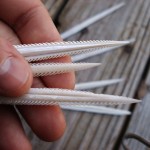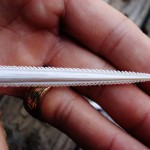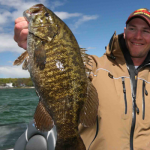By David Graham
There is something strangely irresistible about pursuing a creature that can injure, maim, or kill its pursuer. I occasionally stray from my typical pursuit of freshwater oddities and head for the shores of one of our great oceans – typically the Atlantic. Here one can evaluate the infinitely unique opportunities from an angling perspective. Our oceans, without question , are home to the greatest biodiversity on the planet. The oceans constitute 90% of all habitable area on the planet and nearly 80% of all life on earth.
Much like the freshwater community, saltwater anglers have their own list of ‘species to be avoided’ and, in many cases, scorned. Call them trash fish if you will, but at the end of the day all species great and small are interesting to the boundless angler who chooses to encounter any finned creatures available. The ray species, particularly stingrays, are arguably among the most frequently encountered yet scorned saltwater inhabitants.
Stingrays are a group of ray species which, like their shark cousins, are cartilaginous fish. Most stingrays are equipped with a serrated barb at the base of the tail. This barb, a piece of bone-like cartilage, serves exclusively as a self defense mechanism. The underside of the barb contains a pair of grooves which act as a channel for a set of venom glands. Encasing the serrated barb is a thin layer of flesh which serves as a sheath, concentrating the venom within. When the barb is thrust into a stingray’s victim, that thin layer of flesh peels back, allowing the release of its venom.
Despite the stingray’s realistic threat to an unsuspecting angler who happens to wade into their domain, stingrays do not actively attack or even aggressively defend themselves. Like many creatures, they are more likely to avoid a dangerous encounter by simply moving away. In the event of an assumed or actual attack from a shark or other creature, the stingray will whip its tail around in an attempt to sting the threat. The stingray will generally break its barb off or release the barb entirely into the victim. The stingray is not ‘defenseless’ for long, however; its barbs grow back.
Human victims of a stingray puncture experience extreme pain which can result in swelling, muscle cramps, severed arteries, and possible bacterial infection. Deaths from stingray barbs, however, are rare. The 2006 death of world-renowned Animal Activist Steve Irwin happened while Irwin was snorkeling in the Great Barrier Reef. Irwin reportedly swam above a stingray which, perhaps in a response to being ‘boxed in’, pierced him in the chest.
The stingray’s body is flat, allowing it to effectively conceal itself within disturbed sand and mud, and to venture into very shallow waters to pursue its preferred prey. The stingray’s eyes are situated on top of its head while the mouth is on the underside of its body, meaning it cannot effectively view its prey and therefore seems to rely primarily on its sense of smell and taste to locate prey. Stingray feed primarily on mollusks and crustaceans, but will feed opportunistically on injured or unwary fish. The mouth of many stingray contains a set of crushing plates that allow them to grind mollusks and the protective exoskeleton shells of crustaceans. Other stingrays’ mouths are more ‘sucker-like’ with abrasive ‘sandpaper like’ teeth. They will frequent areas such as reefs, shallow tide pools, and grassy flats during higher tides. Stingray will venture all the way up to the shallowest breakers of the surf line. While this presents a significant risk to recreational beach goers, it provides a unique opportunity for surf anglers searching for a willing foe with strong shoulders.

Numerous species of stingray can be encountered in nearly all areas of our oceans and saltwater habitats worldwide, but for fishing purposes we will focus on characteristics of the most common species which frequent habitats closer to our North American shores. An angler who discovers that the vigorous ‘fish’ on the end of his/her line is a stingray will typically not be happy to make this discovery. The intentional pursuit of a stingray is rare, and perhaps understandably so. There is nothing particularly exciting about the fight of a large stingray; their bodies are designed for life on the bottom of the ocean. Because they do not have a neck or spine, stingray are not going to head shake. Their safe haven and preferred dwelling is on the ‘floor’ of the ocean, therefore the stingray will generally not provide an exciting areal display or exhibit great bursts of speed and rapid directional change. Instead, the fight of a stingray is a constant, tremendous pressure and strain which will test the strength and determination of an angler, literally from head to toe. The battle is immensely taxing and extraordinarily discouraging. Truly large stingray will slowly and methodically break an angler’s will by choosing a single direction and daring an angler to slow them down. The stingray has a set of openings at the top of its head called spiracles which allow them to take in water even when the fish is nearly entirely buried under the sand. This evasive maneuver is unfortunately a go-to method for large stingray attempting to evade capture by rod and reel. Even with the heaviest tackle, an angler should bring a good chair and plenty of water for this showdown! Many stingrays will bury themselves under the sand and simply ‘wait it out’ rather than tax themselves with movement and active resistance. Trying to pry the flattened body of a 50-plus pound stingray from the ocean’s floor is a daunting endeavor. During this time of wait, the stingray is merely re-energizing itself and setting the angler up for another long, taxing run that brings the battle back to square one.
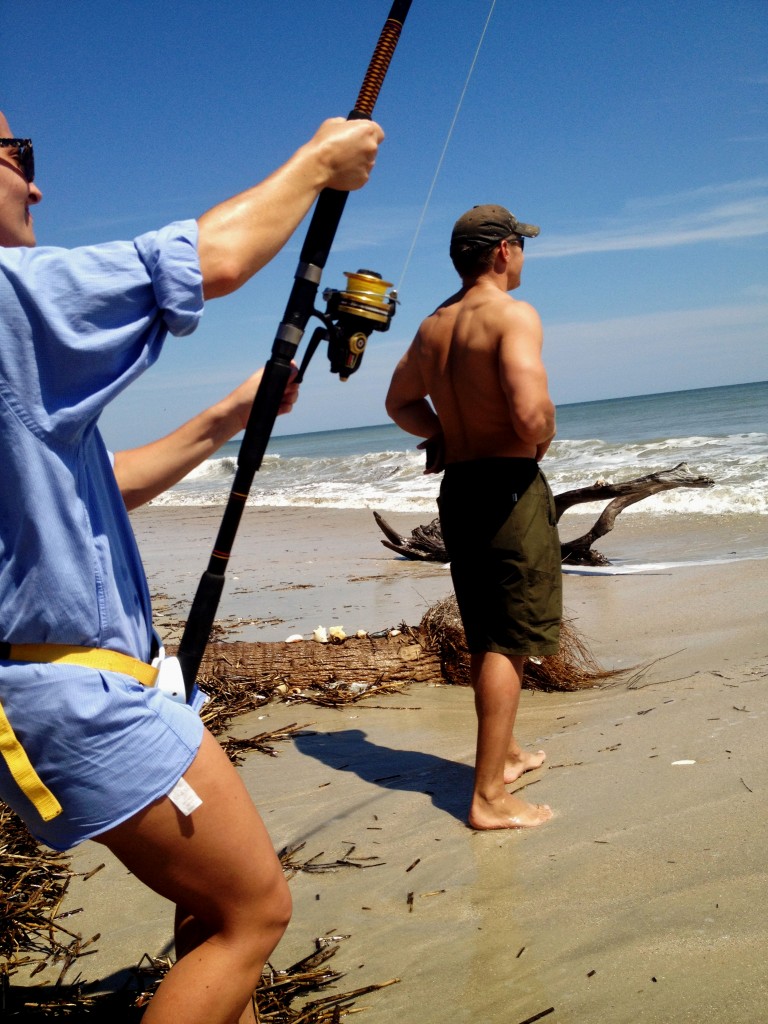
Anglers who find a huge stingray on the end of anything less than 50-pound braided line can either expect to cut their own line, or destroy hundreds of yards of monofilament line by stretch and fray. My words may not provide awe-inspiring mental images of a technical war with a crafty fish, but I believe that the complete angler should experience excitement and pride from all battle tactics provided by the myriad number of finned creatures provided by our waters.
I believe there is a time and place for all types of fishing. When the time is right for that truly raw form of power and endurance, a large stingray is second to none. During the course of an hour long battle, an angler will experience every thrill of the angling experience beginning with the initial bend of the rod and the scream of the drag. This element is exciting, and we begin to visualize the conquest and relish the most positive elements of the experience at hand.
Battling a stingray can take a significant amount of time, perhaps an hour or longer, without any dynamic change other than constant pressure as fatigue and aggravation builds. We focus less on the capture, and more on the fact that the sun is hot, our back hurts, the legs are giving out, and we can’t feel our arms anymore. This emotion ebbs and flows much like the tide in which we are fishing, as the ray comes inland and forces its way back out into the sand that protects it.
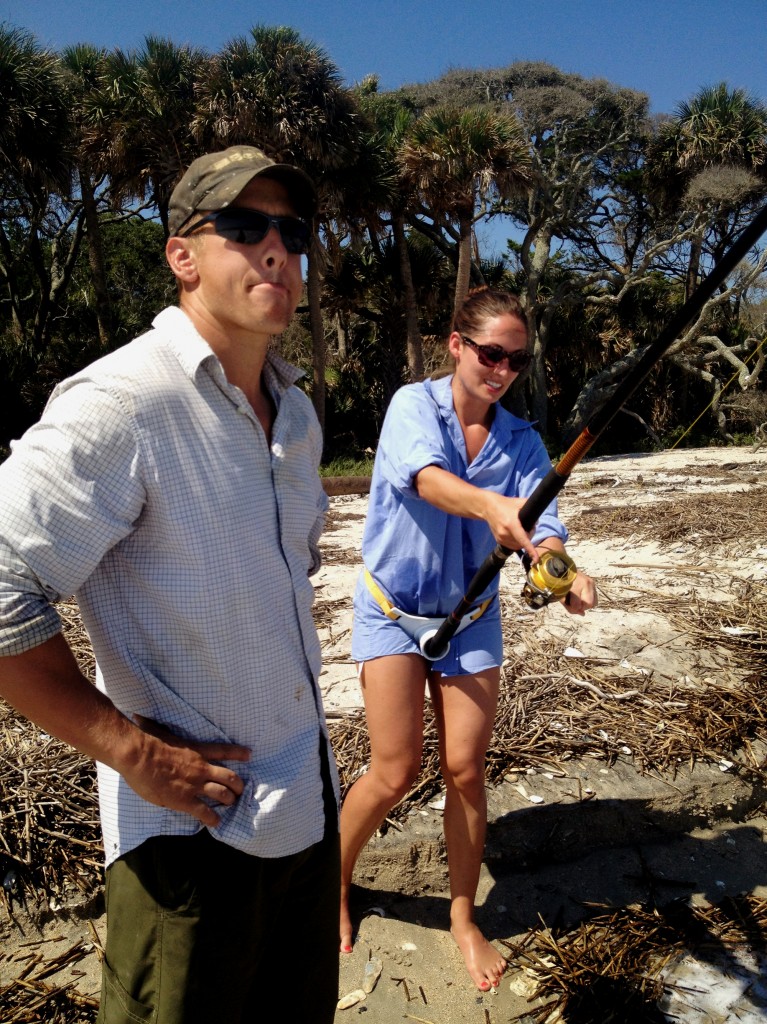
Bringing in a large stingray is thrilling, but actually landing one is fraught with danger. Large stingray cannot simply be thrust up onto the bank; they almost always attempt to ‘bury’ themselves some number of yards out in the shallow breakers. Bringing one in requires a ‘team effort’, meaning someone must go in after the ray to coax or physically remove it from the sand. A long steel leader is helpful at this point; with a long trace of leader, and a set of gloves, an angler’s assistant can land a large stingray by wading out at a safe distance from the fish and pulling it the rest of the way up onto shore by hand.
The size, and shape of these fish is truly unique and nothing like any other fish offers. They are magnificent creatures that, by their very appearance, inspire fear and respect. The typical ‘pose with the catch’ that most anglers strike cannot be efficiently accomplished with a large stingray. There is virtually nothing to grab, making any sort of pose with the fish very awkward and difficult. Before handling a stingray for photos, its barb must be given careful and respectful consideration. A simple wash rag can be wrapped around the ray’s barb during photos. Another option is to remove the barb. With a long set of pliers and a sharp fillet knife, the barb can be secured and a blade run underneath it to cut the barb off at its base. This may cause the fish to bleed, but the stingray will absolutely generate another barb at a later time. Removing the barb is a catch and release safety precaution as well. Because surf fishing may require wading back out to cast, it is critical to take precautions when returning such a fish to the immediate area where anglers and waders are present. Additionally, the barb of a large stingray can be preserved by boiling the flesh off of the bony spine and then bleaching all remaining bacteria off of the spine. This gives an angler a really neat, pearly white ‘sting ray souvenir’.

LazerTrokar TK4 Lancet Circle
There is nothing complex or fancy about the ‘hardware’ required for stingray fishing. Large surf casting spinning combos are sufficient when pursuing the fish from the shore. Braided line is convenient due to the stingray’s tendency to bury itself. It is a game of muscle with stingray which can and will peel out a lot of line, so having more line capacity with strong braid will allow an angler to compensate for long runs with the stout ability to muscle the fish from the bottom when it settles. Because even the largest stingray will venture close to land, paddling baits way out over the breakers with kayaks or other means is unnecessary. A basic Carolina rig is simple and effective. A 6 to 8 oz. pyramid sinker fixed to a sinker slider above a 5 to 6 foot steel leader is standard bottom fishing equipment for stingray. Circle hooks are ideal to avoid gut hooking stingray because they will quickly engulf and deeply swallow even large chunks of bait surprisingly quickly. Using small chunks of cut bait will pick up the bite of any large stingray in the area. It may be a convenient and fun way to pass the time waiting for a bite to use light tackle combos rigged with very small chunks of calamari to capture small species of fish from the surf such as whiting, lady fish, pinfish and more. These will serve as good local forage species that are familiar to the stingray you pursue.
For surf casting gear, rod spikes are a must when fishing multiple rods. These can be purchased from most coastal fishing shops, but they can be as simple as a 3 foot long PVC pipe with a sharpened end. Pressing the rod spike vertically into the sand creates a convenient rod stand while waiting on bites. Stingrays possess remarkable power and are absolutely capable of pulling a rod from a rod spike and into the ocean. It is highly recommended that the angler set bait runners or loosen the drag on reels to allow the fish to run before engaging it. Upon hooking the fish, an angler should prepare himself for an excruciatingly taxing battle with zero give.
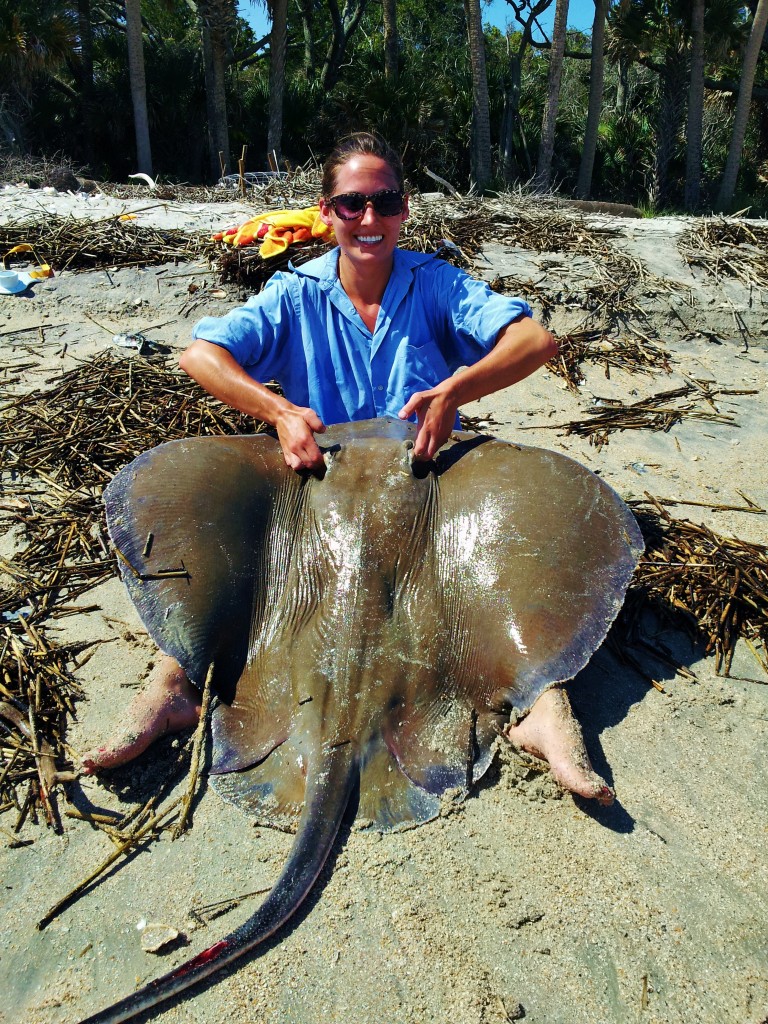
I have found almost no publications that would cater to the interest of an angler who actually chooses to pursue stingray by rod and reel. Having had ample personal experience with local species in my area such as the Southern Stingray, Atlantic Stingray and Butterfly rays, I can’t understand why an angler would not find the prospect of battling such a fish to be intriguing. Stingrays are entirely unique in their proportions and ecology, and are rivaled by few fish in their pound for pound raw power.
I feel that all anglers should actively seek to challenge their own ‘comfort zone’. All of us relish the opportunity to battle high-profile fish that can launch themselves into the air, display speed and agility, cover and concealment, dangerous weaponry, or other uniquely identifiable methods of evasion.
Sometimes, though, it makes sense to forego the more visually rewarding dynamics of fishing, and simply subject ourselves to incredibly consistent, raw strength. I am certain that the stingray is a unique candidate for such a challenge. Sleek and streamlined as a jet, tenacious as a bulldog, and equipped with a natural ‘spear’ that can maim or kill its opponent – the stingray deserves the deliberation of any multi-species angler.

David Graham is an extreme multi-species angler and featured columnist for Fishing-Headquarters Magazine. Follow his monster fish adventures by visiting his blog: www.fishing-headquarters.com/boundlesspursuit/




